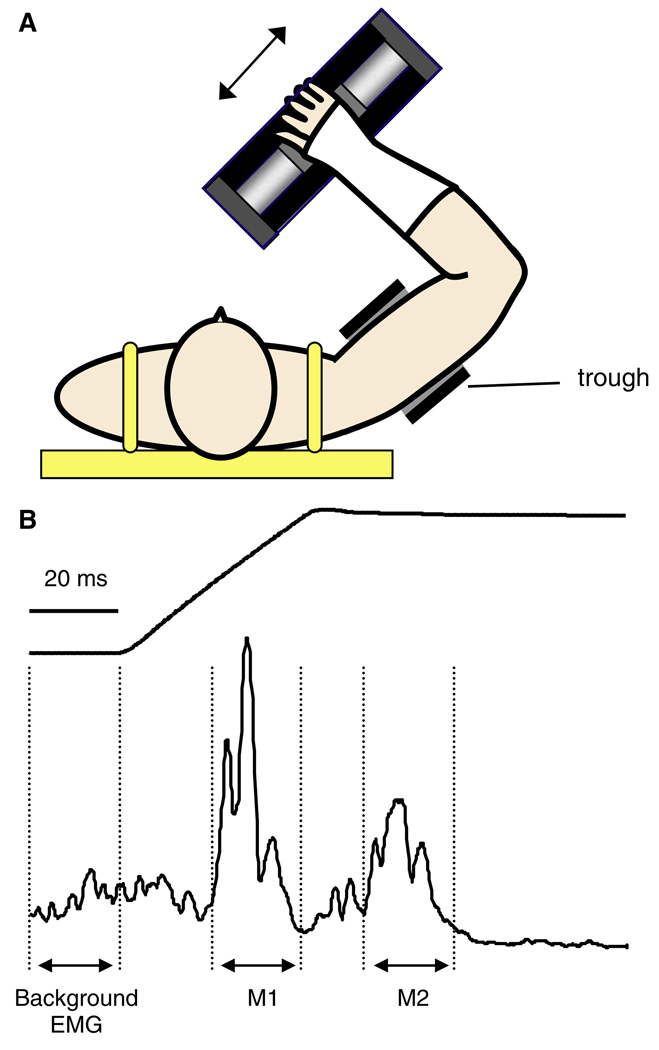Fig. 1.
a Task set-up. The upper arm and forearm were positioned in the horizontal plane at shoulder height. The position of the elbow was adjusted so that the forearm was perpendicular to the movement axis of the actuator. Motion of the actuator (indicated by arrows) resulted in elbow joint rotation in the flexion/extension axis. The upper arm remained stationary during the displacements. b Example actuator displacement (top) and electromyographic recordings from the biceps muscle (bottom) demonstrating the calculation of M1 and M2 response size. Response area was expressed relative to an equivalent 20 ms window of muscle activation prior to the perturbation

